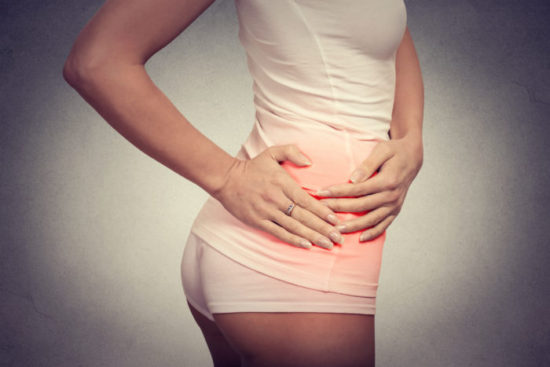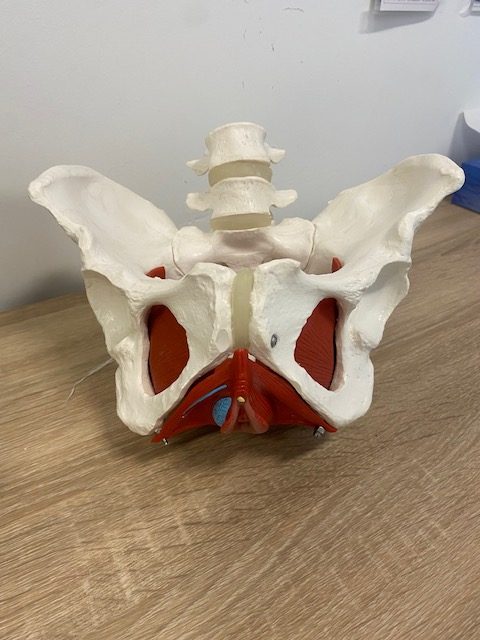All backed up: perineal descent

Chronic constipation can cause chronic straining of the muscles in the perineum. Over time this can lead to the perineum drooping downwards. This is called perineal descent.
Think of the perineum like a trampoline bed. When you’re upright it supports the weight of the entire trunk. Anything that goes on that trampoline is supported and it retains it’s spring. In constipation the stool weighs down the perineum. It’s similar to leaving a dead weight in the middle of the trampoline bed. The trampoline bed looses its spring and the bed stretches out. The same thing happens in the body. The rectum which sits on the perineum gets weighed down and over-stretches to accommodate for the stool build up.
Pelvic Floor Muscle Coordination
Eliminating the stool isn’t as easy as lifting the weight off a trampoline bed. In the perineum, the pelvic floor muscles work in a coordinated manner to allow outward movement of the stool. A heavier harder stool is more difficult to eliminate. Increased pushing and straining can tire out the pelvic floor muscles.
Over time this cycle self perpetuates. An overstretched rectum and tired pelvic floor muscles lead to less springy tissues and the perineum dropping. This is perineal descent.
It is common with these three conditions: chronic constipation, fecal incontinence and anal pain of no known source.
Causes
Known causes of perineal descent includes vaginal deliveries and rectal prolapse (rectocele or rectal intussusception).
Diagnosis
Perineal descent can be measured using a defecography, in which a person defecates a barium paste while x-rays are taken. This test can show where the functional problem lies during eliminating.
Treatment
Perineal descent can not be fixed with surgery. Scientific research recommends conservative treatment. This includes changing dietary habits, laxatives, biofeedback therapy, and use of external devices to support the rectal wall when defecating. This means you have to put in the work. There is no quick fix it solution.
Pelvic PT
Physical therapy options vary depending on the presentation of the patient. Treatment for constipation is very different than treatment for fecal incontinence. Pelvic floor physical therapy allows for a lot of options to cater to the patients needs. In combination with dietary changes it can be very beneficial and restore good motility. The key is not to let this go unchecked.
References:
https://www.ncbi.nlm.nih.gov/pmc/articles/PMC3017974/
Author: Irene Hernandez, DPT
Editing: Keely Faridi, PT







